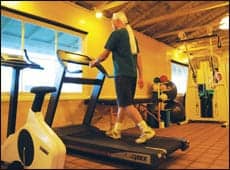
Bayly, the Lilyan and E. Lisle Hughes Professor of Mechanical Engineering and chair of the department of Mechanical Engineering & Materials Science, notes that the team’s concern rests with all individuals who hit their head, “It’s not only a factor for NFL players, but anyone’s who’s had a traumatic brain injury is at greater risk for Alzheimer’s disease and potentially other neurological disorders,” Bayly says. He adds that the concern also extends to basketball players and soccer players who also get concussion, designating the sport concussion as a, “widespread problem.”
The team notes that using the new fund, they plan to create a 3-D picture if the strain throughout the brain during low-level normal head motions. To accomplish this, researchers will reportedly measure a 3-D relative motion between the brain and the skull and estimate strain in live human and cadaver brains during mild head acceleration. According to a recent news release, the researchers will also assess the effects of residual stress on the human brain and compare 3-D displacement and strain fields to the computer models.
The computer simulation is designed to provide additional information about the basic physics of brain injury, and also assist in developing approaches to prevention and therapy, Bayly states. “…The necessary ingredients for good simulations are materials, the structure, how the materials are put together and data for validation. That’s what we’re providing,” Bayly adds.
Photo Credit: Washington University in St. Louis
Source: Washington University in St. Louis




